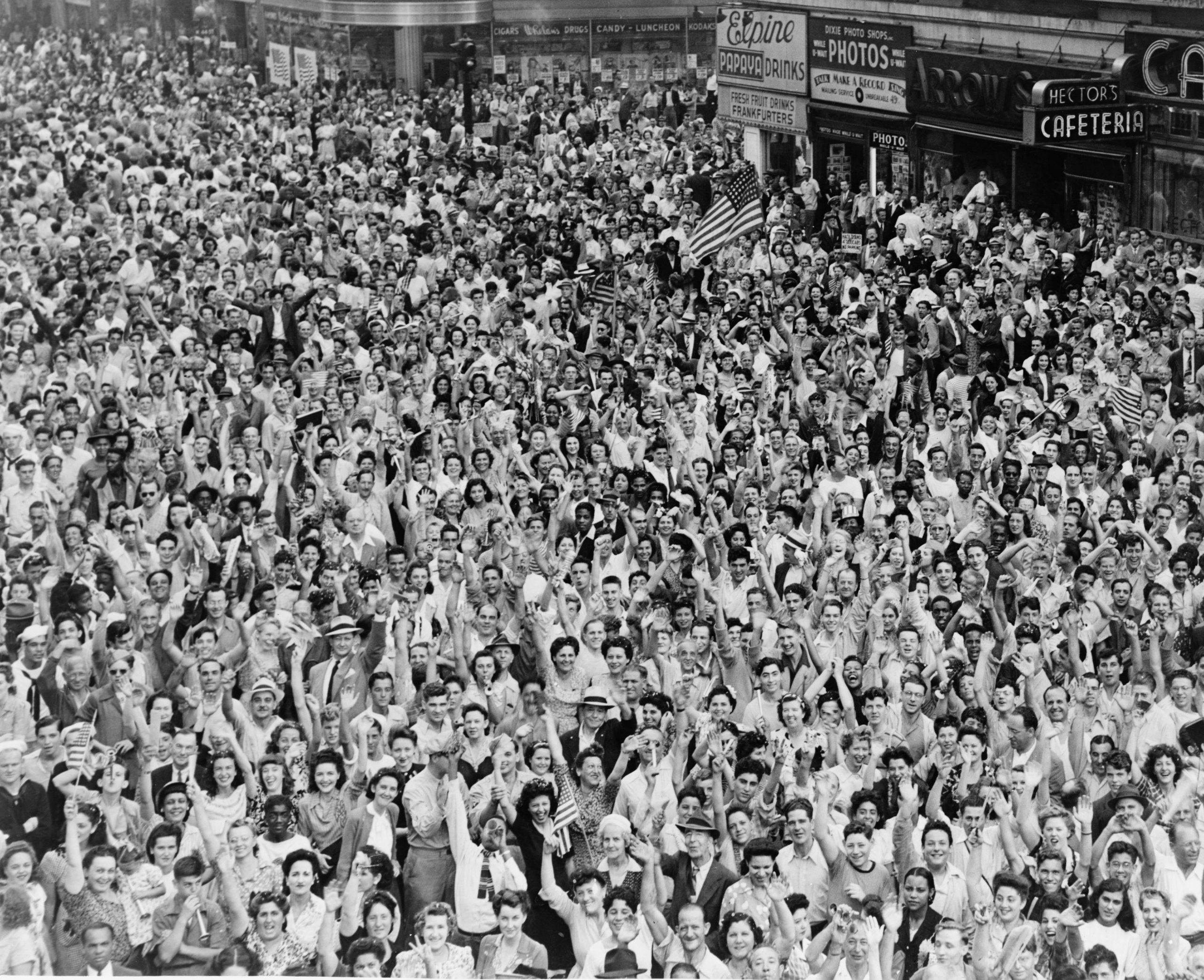By some estimates, over 600,000 people worked on the Manhattan Project. Workers joined the project for very different reasons. The vast majority of the Manhattan Project workers were not aware of what it was trying to accomplish. It was only project officials and top scientists who were aware of the Manhattan Project’s true nature. Bill Wilcox, who worked at Oak Ridge, recalled that when he asked in his job interview what he would be working on, he was only told, “No, can’t tell you. Secret! Secret, secret, secret!” It is impossible to pinpoint all the determining factors for wanting to work on the Manhattan Project, but this article will spotlight some of the main reasons why so many people were willing to work on a top secret wartime project.
Job Opportunities
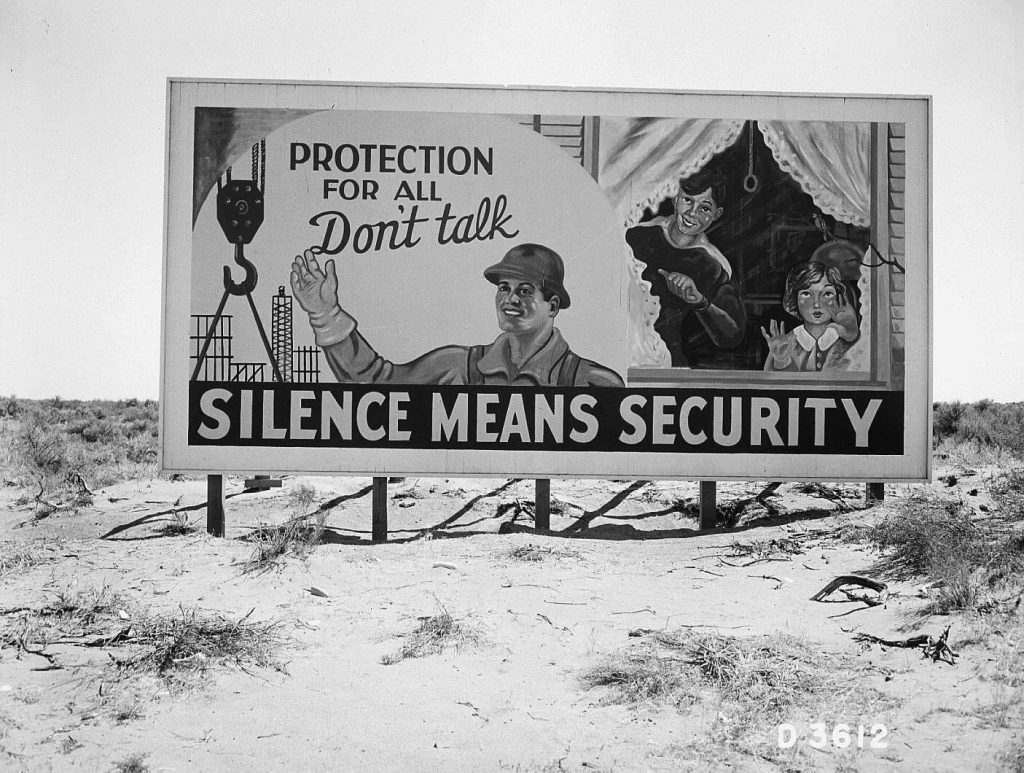
Many people joined the Manhattan Project simply because it offered lucrative wages. Jerry Saucier, a reactor operator at Hanford, remembered, “Wages were better than average. They had to try to hold them at Hanford. That was the only incentive. Living was cheap. People came from every place. There were people out there who were illiterate, they couldn’t read, they couldn’t write.”
The Manhattan Project also offered numerous job opportunities to African-Americans. Nevertheless, many African-Americans still experienced segregation and discrimination, particularly at Oak Ridge and at Hanford. Kattie Strickland, for example, was part of the janitorial staff at Oak Ridge. Unlike the white women with whom she worked, Strickland was prohibited from sharing living quarters with her husband, who also worked on the Manhattan Project. Nevertheless, as Strickland remembered, “I thought I was rich! All that money. We paid a dollar and a half for a week for a bed, rent and get a change twice a week. We were not making that much money, but more than I had ever seen.”
Patriotism
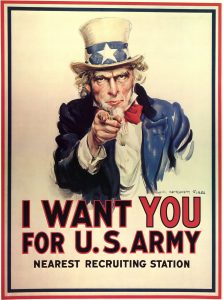 For other Manhattan Project workers, patriotism was a motivating factor for joining the effort. This included members of the armed forces, such as the Special Engineer Detachment (SED). Herman Snyder, an SED at Oak Ridge, noted that “youngsters my age, when their country gets blasted like we were in Pearl Harbor, we get angry. We want to fight. I was just in my freshman year at the university, but a lot of the guys finished that semester and took off.” Snyder remembered that during his time working on the Manhattan Project, “I felt like I was doing what the country wanted me to be doing. And I was in uniform and I was proud of that. When the first bomb fell, I was elated. So was all of Oak Ridge. We really celebrated.”
For other Manhattan Project workers, patriotism was a motivating factor for joining the effort. This included members of the armed forces, such as the Special Engineer Detachment (SED). Herman Snyder, an SED at Oak Ridge, noted that “youngsters my age, when their country gets blasted like we were in Pearl Harbor, we get angry. We want to fight. I was just in my freshman year at the university, but a lot of the guys finished that semester and took off.” Snyder remembered that during his time working on the Manhattan Project, “I felt like I was doing what the country wanted me to be doing. And I was in uniform and I was proud of that. When the first bomb fell, I was elated. So was all of Oak Ridge. We really celebrated.”
Dorothy Wilkinson, a “calutron girl” at Oak Ridge, also remembered Pearl Harbor as a motivation for joining the Manhattan Project. “I came right out of high school when I graduated because I had a brother killed on the Arizona at Pearl Harbor, and I thought that I would like to do something for the war effort.” For many of the workers, joining the Manhattan Project was simply a way to help the United States win the war.
Scientific Curiosity
Although the average Manhattan Project worker was not aware of the project’s goal, for many scientists the lure of the secrets of the atom was enough to entice them to join. John Wheeler, the leading physicist in residence at Hanford, remembered, “There was a sense of adventure about it. I associate it with pioneering. I would think it was like the first steamship, that must have been exciting. The first airplane was exciting, the first locomotive was exciting. I feel these comparisons are the right comparisons.”
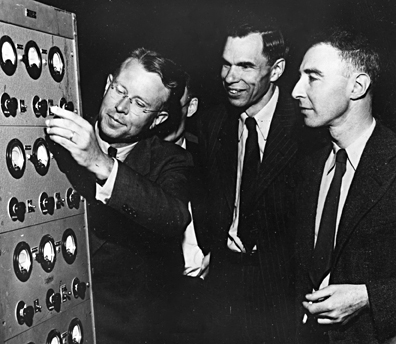
Wheeler also remembered the excitement of selecting the Hanford Site, a place built especially for the Manhattan Project. “There was a great romance about it. The way to get the feel of that romance is to put yourself back at that meeting in Wilmington, when we had a map of the United States spread out in front of us, and different possibilities there for where this plant might be sited. Great expanses of land. It was almost as if you were Columbus deciding where you would go exploring, or as if you were setting up a new republic.”
Robert Christy, a physicist who worked on Chicago Pile-1 and then later at Los Alamos, echoed these sentiments. He remembered, “I found that work more interesting than teaching twelve hours a week at Illinois Tech. So I joined the Chicago project. I enjoyed the work. That was the important thing.” Christy also described his loyalty to J. Robert Oppenheimer. When Oppenheimer “asked if I would join him in Los Alamos, I said I would be delighted because like most of his students, I would more or less follow him to the ends of the earth. I was very pleased to be able to go and help him.”
Christy was not the only scientist that Oppenheimer brought to Los Alamos. Although not all the scientists were explicitly told that they would be building a bomb, many were intrigued by the chance to work with scientific leaders like Oppenheimer and Glenn Seaborg, who also worked to recruit top scientists from across the country. As Seaborg recalled telling his recruits, “‘You just come. We’re working on something that’s more important than the discovery of electricity. You just come here and I’ll tell you what it is.’ This almost always brought them.”
Fear of Germany
For the scientists who were aware of the prolific German scientific community, the fear that Germany could develop an atomic bomb before the United States was also a driving factor. Although the Alsos Mission later discovered that the German atomic bomb project had not progressed very far, most members of the Manhattan Project did not know this until after the war. Leona Marshall Libby, who worked at Chicago and Hanford and who was arguably the most influential woman scientist to work on the Manhattan Project, remembered the atmosphere at the time:
I think everyone was terrified that we were wrong [in our way of developing the bomb] and the Germans were ahead of us. That was a persistent and ever-present fear, fed, of course, by the fact that our leaders knew those people in Germany. They went to school with them. Our leaders were terrified, and that terror fed to us. If the Germans had got it before we did, I don’t know what would have happened to the world. Something different. Germany led in the field of physics, in every respect, at the time war set in, when Hitler lowered the boom. It was a very frightening time.
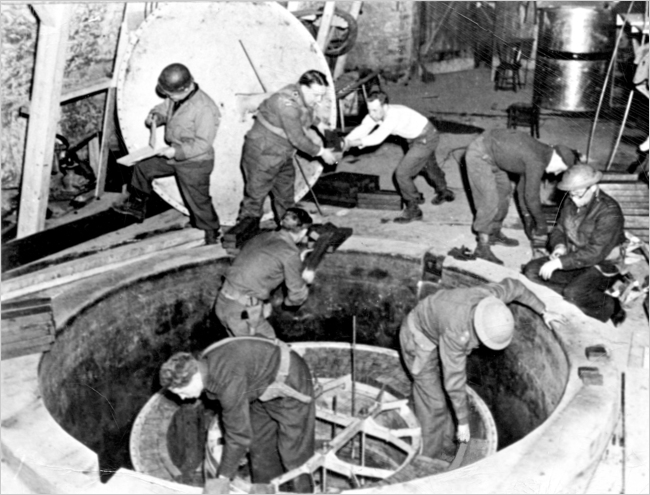
The fear of a German bomb was especially present among the European refugees who worked on the Manhattan Project, many of whom had fled persecution. One example was John Shacter, an Austrian chemical engineer who immigrated to the United States after Hitler came to power. Shacter, who worked at Oak Ridge, remembered that “we thought that we were racing the Germans, and whoever got the bomb first would win the war! So we worked days and nights. Forget the eight-hour day. I mean that—nobody worked eight hours. We worked day and night, literally, to try to beat the Germans, and found out later that they weren’t all that far advanced.”
Joseph Rotblat, a Polish physicist whose wife died in the Holocaust, had similar reasons for joining the Manhattan Project. Rotblat had moral objections to building a bomb, later writing in an article for The Bulletin of the Atomic Scientists, “The notion of utilizing my knowledge to produce an awesome weapon of destruction was abhorrent to me.” Nevertheless, he also remembered, “In my gnawing fear, the ‘someone’ who might put it into practice was precisely defined: German scientists. I had no doubt that the Nazis would not hesitate to use any device, however inhumane, if it gave their doctrine world domination.”
Rotblat also expressed a desire for a nuclear deterrent. “I convinced myself that the only way to stop the Germans from using it against us would be if we too had the bomb and threatened to retaliate,” he recalled. “My scenario never envisaged that we should use it, not even against the Germans. We needed the bomb for the sole purpose of making sure that it would not be used by them.” He also noted that the invasion of Poland “was the final thing which clinched it. I could see now that the German might is real indeed, and if they could overrun Poland within a short time, then what was going to stop them?”
Legacy
The motivations of Manhattan Project workers are important from a historical perspective because they provide context to the project in its wartime atmosphere. James Forde, a lab assistant at Columbia University who primarily cleaned glass test tubes, remembered the day he learned what the Manhattan Project had been developing. “I saw the headline where we had dropped the bomb. I said, ‘Oh my God. That is what I was working on.’”

While many scientists were initially drawn to the Manhattan Project, some became disenchanted with it over time, particularly after the bombings of Hiroshima and Nagasaki. Joseph Rotblat actually left the project, the only prominent scientist to do so before the bombings took place. As he described in an interview, “The growing evidence that the war in Europe would be over before the bomb project was completed, made my participation in it pointless. If it took the Americans such a long time, then my fear of the Germans being first was groundless. When it became evident, toward the end of 1944, that the Germans had abandoned their bomb project, the whole purpose of my being in Los Alamos ceased to be, and I asked for permission to leave and return to Britain.”
Many other scientists also had serious reservations about using nuclear weapons in warfare. In the summer of 1945, some scientists drafted the Franck Report and the Szilard Petition, which asked for a demonstration of the bomb before dropping it on a city. After the war, many of the same scientists created The Bulletin of the Atomic Scientists, which pushed for the peaceful uses of atomic energy.
Nevertheless, many others had no problem with their respective roles in the success of the Manhattan Project. Leona Marshall Libby, for example, asserted, “I have no regrets. I think we did right, and we couldn’t have done it differently. Yeah, I know it has been suggested the second bomb, Nagasaki, was not necessary. The guys who cry on shoulders. When you are in a war, to the death, I don’t think you stand around and ask, ‘Is it right?’” Colonel Paul Tibbets, the pilot of the Enola Gay, the plane that dropped the bomb on Hiroshima, similarly affirmed, “I can assure you, I have never lost a night’s sleep on the deal.”
Evidently, the hundreds of thousands of Manhattan Project workers had many different reasons for wanting to join. To hear more stories and opinions from project workers and their families, please visit our Voices of the Manhattan Project website.





